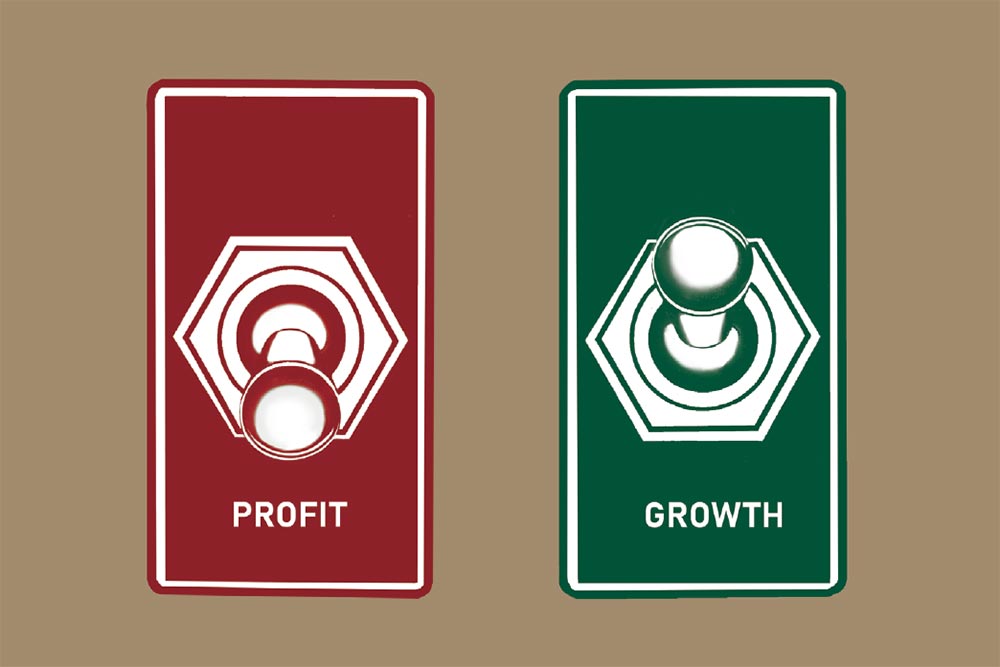Show me the money!” screamed the character played by Cuba Gooding Jr in the Hollywood hit movie Jerry McGuire. He may as well have been saying this to start-ups. It encapsulates a fundamental principle in the valuation of businesses: the importance of positive cash flow.
Start-ups venture into the unknown. They often start with losses. But they need a vision. They must see a future with positive cash flow. This vision is vital.
Many start-ups chase growth. They want market share. They offer discounts. They aim for more users. But these can be traps. The dot-com bubble of the late 1990s is a lesson. Big valuations collapsed. Why? There was no positive cash flow, not in the beginning, not even in the distant future.
The success stories of giants like Amazon, which operated with negative cash flows for over a decade, are often cited to justify prolonged negative cash flows in start-ups. However, it is essential to recognise that Amazon is an outlier. The median start-up does not have the same trajectory or potential as Amazon. For every Amazon, there are countless start-ups that failed because they could not generate positive cash flow in time.
Indian start-ups provide a rich tapestry of examples in this context. Companies like Ola and Flipkart, in their early days, burned significant cash to acquire customers, often offering deep discounts. While this strategy helped them gain market share, it also raised questions about sustainability. On the other hand, start-ups like Zoho and Freshworks adopted a more measured approach, focusing on building robust products and ensuring positive unit economics before aggressive expansion.
A critical distinction that start-ups, as well as investors, must make is between negative cash flows resulting from investments in research and development or infrastructure and those resulting from customer acquisition costs. The former can be seen as planting seeds for future growth, while the latter, if not managed carefully, can lead to unsustainable burn rates. Investing in innovation and infrastructure can lead to long-term positive cash flows, but spending to merely lure customers can be a perilous strategy.
The landscape of business is littered with the remains of start-ups that expanded too quickly, prioritising growth over profitability. While rapid expansion can be alluring, it is essential to remember that, without a solid financial foundation, even the most promising start-ups can crumble.
For instance, consider the case of WeWork, a company that expanded rapidly but faced significant challenges due to its aggressive growth strategy without a clear path to profitability. On the flip side, companies like Slack or Dropbox focused on building a solid product and user base, ensuring that while they invested in growth, they also kept an eye on their cash flow and unit economics.
Today, there are murmurs in the business community suggesting that we might be in the midst of another such valuation bubble. In the current business landscape, the edtech sector provides a pertinent example of the importance of positive cash flow. Over the past few years, with the rise of digital learning and the global shift towards online education, edtech start-ups have seen an unprecedented surge in demand. Investors poured billions into these start-ups, lured by the promise of high returns in a rapidly growing market.
However, as the sector matured, many of these start-ups began facing significant challenges. While they had managed to acquire a large number of users through aggressive marketing and discounts, sustaining these users and ensuring consistent revenue became a hurdle. Many edtech start-ups operated with negative cash flows, hoping the sheer volume of users would eventually translate into profitability. However, without a clear monetisation strategy, and facing intense competition, several of these start-ups began to falter.
Recent reports suggest that a number of edtech start-ups are beginning to crash. Despite having impressive user metrics, they struggle to achieve positive cash flow. Their heavy reliance on investor funds to offer discounts and freebies, without a clear path to profitability, has made them vulnerable. This scenario underscores the importance of ensuring that negative cash flows are a result of strategic investments in growth and not merely a tactic to acquire users without a sustainable business model.
A notable example from India is Byju’s, one of the world’s most valuable edtech companies. While Byju’s has achieved remarkable growth and boasts millions of users, it has also faced challenges in terms of profitability. The company spent heavily on marketing campaigns, acquisitions and content development, leading to significant cash burn. While these investments were aimed at capturing a larger market share, the path to consistent positive cash flow became a concern for stakeholders. The story of Byju’s underscores the importance of balancing aggressive growth strategies with sound financial planning.
The edtech sector’s challenges serve as a cautionary tale for start-ups in other sectors as well. While initial growth and user acquisition are essential, they must be balanced with a clear vision for achieving positive cash flow. Start-ups must ensure they build a sustainable business model that can withstand market fluctuations and competition.
In conclusion, while growth metrics and market share indicate a start-up’s potential, they are not the sole determinants of success. A start-up’s ability to generate positive cash flow or, at the very least, demonstrate a clear path towards it, is fundamental.
Start-ups, by their very nature, are ventures into the unknown. They tread new paths, often without the assurance of immediate returns. It is not uncommon for start-ups to operate at a loss initially. However, what is crucial is the ability to “see the light at the end of the tunnel”. This light represents the eventual positive cash flow that the business will generate. Even if this light seems distant, its mere visibility can be the difference between a start-up’s success and failure.
The author is professor of finance at the Indian School of Business and faculty director, I-Venture @ ISB









 Just one email a week
Just one email a week